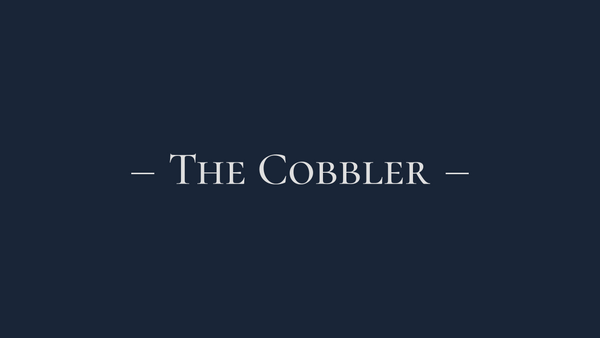
Shoe glossary...to become a real pro
Share
To convey our passion for shoes to you, there is nothing better than providing you with as much vocabulary as possible to get you started!

Display: this consists of putting parts to be assembled in contact and giving them a temporary fixing (by gluing, clamping, nailing, etc.) in the position that they must occupy definitively.
Assemble: this term has a fairly obvious primary meaning ( assembling the upper for example). But it also designates a more precise operation. When we talk about rear assembly we describe the fact of temporarily fixing and centering the upper on the last with the help of a point placed at the back at the location of the rod or the heel.
Baby-Calf: we are talking here about leather coming from small calves whose grain is smooth and fine with a shiny finish.
Baguette: This is a piece of the stem that covers and reinforces the joint stitching of the back of the quarters.

Heel cap: This is what the last layer of the heel is called, which therefore serves as a wear layer in contact with the ground. It is made of leather or rubber or leather with a rubber wedge.
Tip: We are talking here, of course, about the end where the toes are located.
Hard toe: This is a rigid reinforcement (leather in quality shoes) that is placed at the end of the upper and shaped on the end of the last during assembly. It serves to protect the toes while giving firmness and good presentation to this part of the upper. Note: if you are presented with shoes with a soft toe, move on.
Box calf (willow calf): This is a smooth or slightly corked chrome-tanned calfskin leather used to make the uppers.
Note: The British consider box calf to be black. Other colours are called willow calf .
Bracelet: this is the part of the top of the stem (added or simulated) which follows the upper edges of the quarters (long wing).
Shank: This is an elongated piece (made of leather, wood, steel or plastic) placed in the thickness of the sole to give firmness to the arch and support the plantar arch.
Claquage: here we describe the assembly, by means of stitching, of the vamp and the quarters of a rod. The claquage can be with floating lining (separate assembly of the top and the lining) or through all (a single stitch joins all the parts).
Claque: This is the part of the upper that covers the forefoot. Note: we often incorrectly speak of the vamp, which is a less precise term.
Collar: This is a term for leather made from the skin that covered the animal's head, neck and shoulders.

Buttresses: This is a support piece, inserted between the upper and the lining to prevent the upper from sagging and keep the heel in place.
Tanning: in leather manufacturing, tanning includes all the operations carried out after tanning which give the leather its various qualities (flexibility, colour, grain, feel, etc.)
Petit point seam: this is the (vertical) seam that will attach the welt to the outsole, generally with a two-thread stitch.
Welt seam: this is the (horizontal) seam that will connect the welt and the upper to the wall of the insole. It is not visible.
Croupon: This is the leather that comes from the skin covering the back and rump of the animal.
Split leather: When you split the leather, you get two sheets. The one on the flesh side is called split leather. This sheet cannot legally be called leather, unlike the sheet on the skin side.

Full grain leather: This is the name given to leather from which only the epidermis is removed. The original thickness is therefore preserved. It is important to know that the grain is the part of the skin that provides the most resistance.
Oiled leather: we are talking here about leather that has absorbed, during the tanning operations, a significant quantity of fatty matter (oil, grease). This waterproofs it, makes it more resistant and supple.
Suede: This is the leather obtained by tanning the skin of the animal of the same name. Today, Suede actually refers to nubuck or velvet leathers. Its English translation is also used: suede
Lining: This term refers – quite obviously – to the lining of the inside of the upper. On quality shoes, the lining is made of “white calf” leather (a leather tanned without pigment to be smooth and pleasant). It is first glued and then stitched to the inside of the upper.
Shoe trees: Wooden, metal, cardboard or plastic lasts inserted into shoes to give the upper the right consistency and to ensure the maintenance of the shoe between two wearings. The most common are articulated on two axes (length and width).
Last: this is a piece of wood (for custom-made shoes) or plastic (for “ready-to-wear” shoes) representing the volume of the foot and used to make the shoe.
Guarantors: this is a piece attached to the ear of the quarter on which the eyelets (or any other method of closure) are located.
Filling: this is the operation which consists of filling and leveling the bottom of the shoe – after mounting the upper on the last – to provide a larger bearing and adhesion surface for the sole.
Engraving: this is a continuous incision made in the thickness of the leather of the sole to accommodate the stitching.
Mounting: this is the operation which consists of shaping all or part of the rod on the form – using the leather lending agent – and giving it a temporary or definitive fixing.
Nubuck: This is a leather whose grain has been finely sanded to give it a slightly velvety appearance.
Paring: This consists of regularly thinning the edge of a piece of leather or any other material.
Skate: this is a piece of sole that is only found at the forefoot and which is in contact with the ground in order to protect the leather sole.
Pattern making: this is the development of a model on a shape from a creation.
To measure: is to measure the surface area of a skin and express it in square feet. No, it's not a play on words... Shoe manufacturers really favor this unit of measurement.
Ease pleats: these are the pleats that form on the vamp when the foot is bent.
Bar tack: stitches that delimit and reinforce the opening area of a derby-type upper.
English shoe size: the difference between two English shoe sizes is 8.46 millimeters. The gap is greater than for French shoe sizes. Half sizes are therefore more often used.
French shoe size: the difference between two shoe sizes is 2/3 of a centimeter (6.666666 millimeters). It is therefore more precise than the English shoe size. 
First assembly: this is the inner "sole" on which the upper and the welt are assembled and where the foot rests. It is the piece of leather on which everything else is grafted and which is placed first to assemble the shoe.
Insole: this is the thin lining that is glued onto the insole to give the shoe a better presentation.
Grip: this is what we call the extra leather that will be covered by another piece during assembly (stitching).
Quarters: these are the two symmetrical pieces that form the back of the upper and go up more or less over the instep to close the shoe.
Sole tail: rear part of the sole and protective pad.
Shrivel: This is what happens to leather under the effect of heat and/or sweat. It becomes hard like horn and risks cracking.
Filling: folding the edge of a piece of the stem over itself. Depending on the quality of manufacture, the piece is previously trimmed and then glued or glued/sewn.
Under-toes: these are the different thicknesses of leather forming the heel.
Upper: this refers to the upper part of the shoe intended to cover and protect the top of the foot.
Welt: refers to the profiled strip of leather, fixed all around the shoe. There are several types: flat, beaded, square, stepped, etc.
Cowhide: this is the term used to describe leathers made from the skins of adult cattle: bull, ox and cow.
Velvet: we are talking here about a leather prepared in reverse of the usual direction, i.e. on the flesh side. It is finely sanded to have a velvety appearance.
